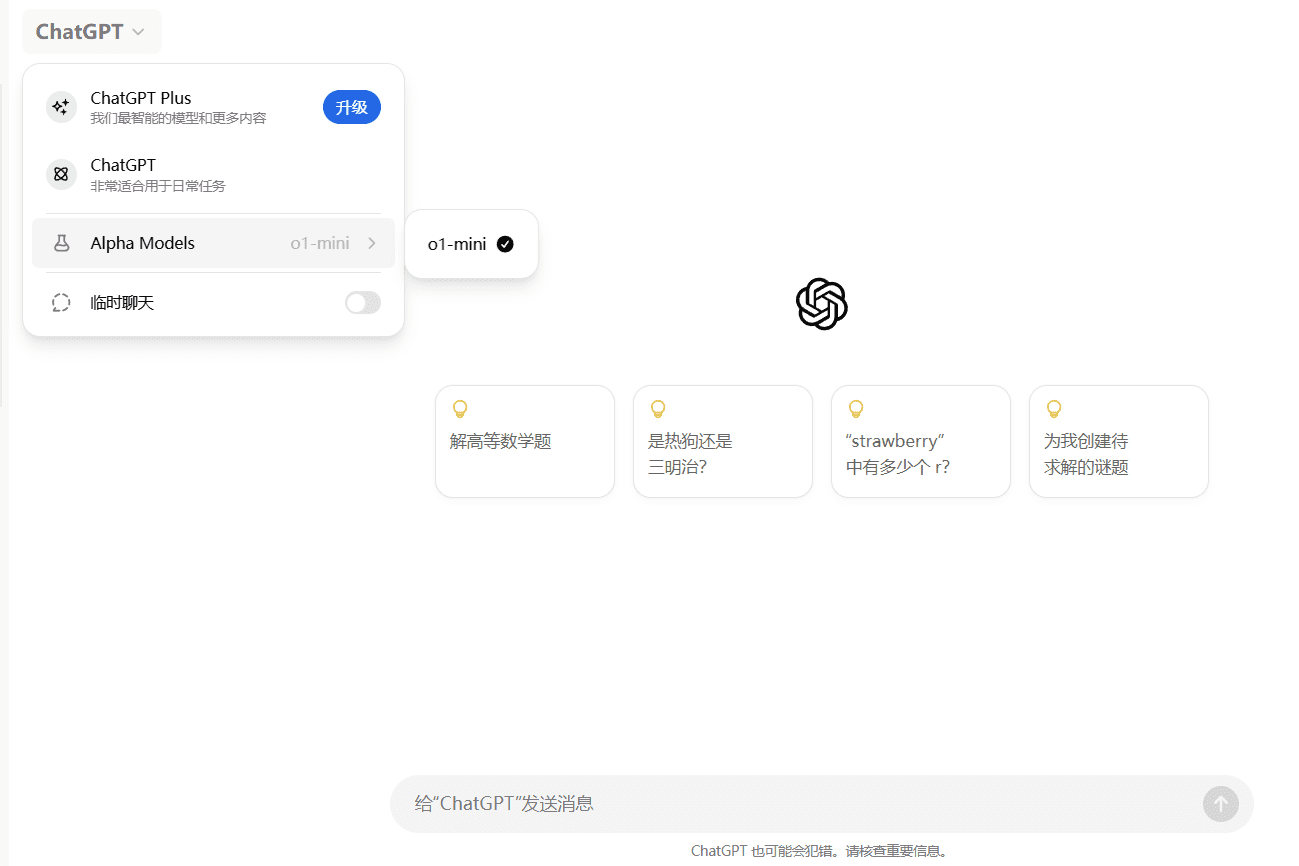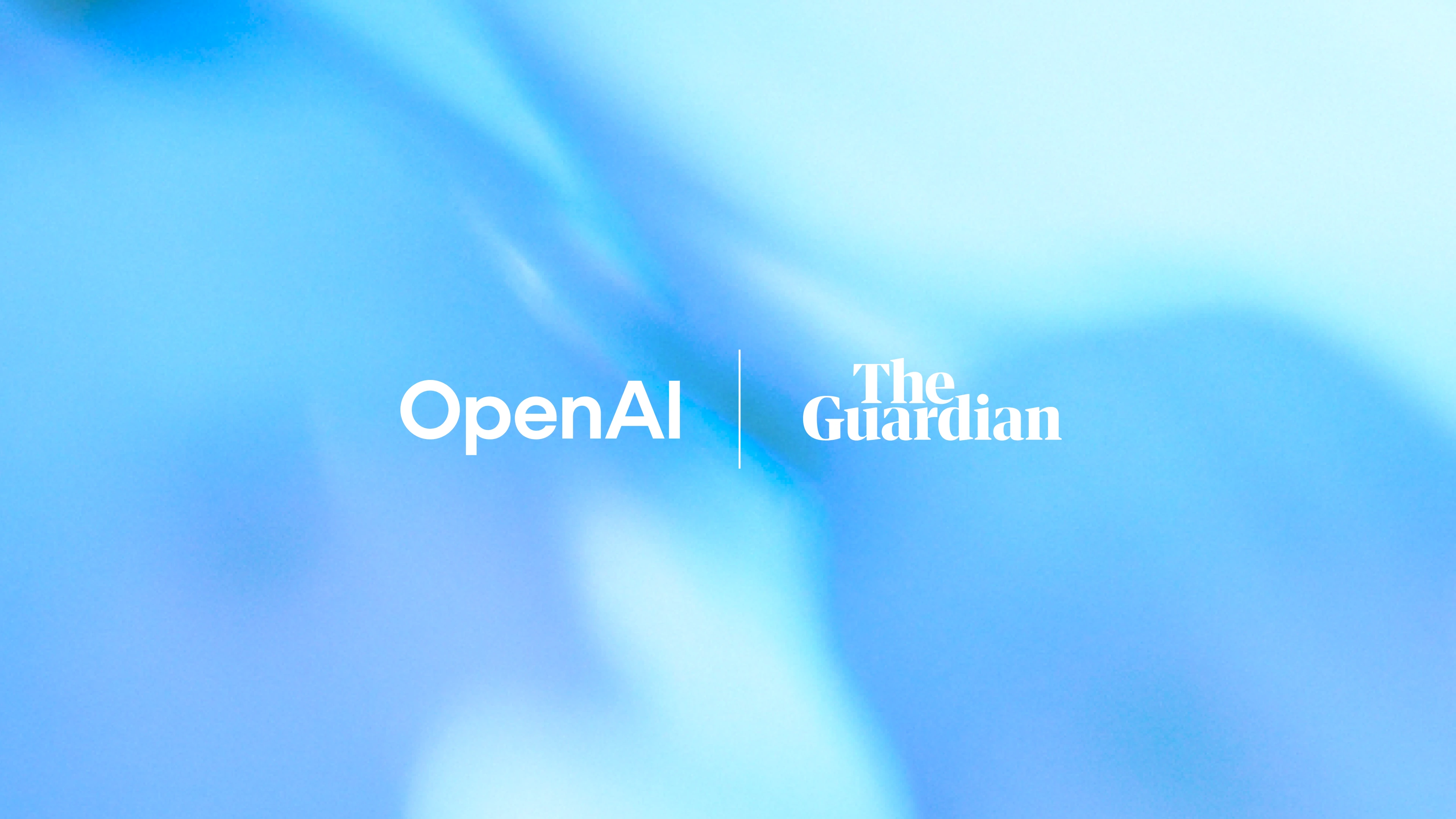Extra: o1-mini has been fully opened to ChatGPT free account experience

The o1 family of models are advanced process reasoning models, of which the small-sized o1-mini model has the potential to be stronger than o1-preview in terms of logical reasoning, although the world knowledge capability has been curtailed.
Currently o1-mini is only open to some free accounts for preview experience. Whether your account officially opens the o1-mini model can be verified with the following decoding questions:
oyfjdnisdr rtqwainr acxz mynzbhhx -> Think step by step
Use the example above to decode.
oyekaijzdf aaptcg suaokybhai ouow aqht mynznvaatzacdfoulxxz
The above validation question comes from OpenAI o1 Reasoning Ability Learning for Large Language ModelsFor more information on the o1-mini model, please read the following article. Introduction to the OpenAI o1-mini Large ModelThe
If you don't have a ChatGPT free account or lack access to the o1-mini experience, you can visit:ChatGPT Mirror Station (domestic access to GPT4 series models) Experience.
Some concerns about the OpenAI o1 model
Model names and inference patterns
- OpenAI o1 represents a new level of AI capability and the counter is reset to 1
- "Preview" indicates that this is an early version of the full model.
- "Mini" indicates that this is a smaller version of the o1 model, optimized for speed
- o - on behalf of OpenAI
- o1 is not a "system" but a model that trains students to grow the chain of reasoning before providing the final answer.
- The icon of o1 symbolically represents an alien with extraordinary abilities
o1 Model size and performance
- o1-mini is smaller and faster than o1-preview, so it will be available to free users in the future
- o1-preview is an early checkpoint in the o1 model that is neither too big nor too small
- o1-mini performs better in STEM tasks but is limited in world knowledge
- o1-mini performs well in some tasks, especially in code-related tasks, better than o1-preview
- Inputs for o1 Token is calculated in the same way as GPT-4o, using the same Tokenizer
- Compared to o1-preview, o1-mini can explore more chains of thought
Input Token Contexts and Model Capabilities
- o1 models will soon support larger input contexts
- o1 model can handle longer, more open-ended tasks, with less need to chunk inputs as in GPT-4o
- o1 can generate long chains of reasoning before providing an answer, unlike previous models
- It is currently not possible to pause inference during CoT inference to add more context, but this feature is being explored in future models
Tools, Features and Upcoming Features
- o1-preview does not currently use tools, but plans to support function calls, code interpreters, and browsing capabilities
- Tool support, structured output and system hints will be added in future updates
- Users may eventually be able to control thinking time and Token limits
- Plans are underway to support streaming processing and consider reflecting inference progress in the API
- The multimodal capabilities of the o1 have been built in with the goal of achieving state-of-the-art performance in tasks like MMMUs
CoT (chain of reasoning) reasoning
- o1 Generating hidden inference chains during inference processes
- No plans to expose CoT Token to API users or ChatGPT
- CoT Token will be summarized, but there is no guarantee that it will be fully consistent with the actual reasoning process
- The instructions in the prompt can influence the way the model thinks about the problem
- Reinforcement learning (RL) was used to enhance the CoT capacity of o1, whereas GPT-4o was unable to achieve its CoT performance through cueing alone
- While the reasoning phase may seem slower, it is actually usually faster to generate an answer because it summarizes the reasoning process
API and usage restrictions
- o1-mini has a weekly limit of 50 prompts for ChatGPT Plus users
- All cues are counted the same in ChatGPT
- More API access tiers and higher limits to be rolled out over time
- Hint caching in APIs is a hot demand, but no timeline yet
Pricing, fine-tuning and expansion
- o1 Model pricing is expected to follow a downward price trend every 1-2 years
- Volume API pricing to be supported as restrictions increase
- Fine-tuning is planned, but the timetable has not yet been finalized
- o1 Expansion limited by bottlenecks in research and engineering talent
- New Extended Paradigm for Inference Computing May Lead to Significant Improvements in Future Generations of Models
- Reverse extensions are not significant at this time, but o1-preview performs only slightly better (or even slightly worse) than GPT-4o on individual writing prompts
Model Development and Research Insights
- o1 Reasoning skills through intensive learning training
- The model demonstrates creative thinking and excels in lateral tasks such as poetry
- o1's philosophical reasoning and broad reasoning skills are impressive, such as deciphering codes
- o1 was used by the researchers to create a GitHub bot that pings the right CODEOWNERS for code reviews
- In internal testing, o1 posed difficult questions to itself to assess its ability to
- Extensive world domain knowledge is being added and will be improved in future releases
- Plan to add updated data for o1-mini (currently October 2023)
Tips Tips and Best Practices
- o1 Benefit from providing tips on edge cases or reasoning styles
- o1 models are more receptive to reasoning cues in cues than earlier models
- Providing relevant context in Retrieval Augmented Generation (RAG) improves performance; irrelevant fragments may weaken inference
General feedback and future improvements
- o1-preview is less restrictive due to being in an early testing phase, but will increase the number of
- Latency and inference times are being actively improved
Significant modeling capabilities
- o1 can think about philosophical questions such as "What is life?"
- Researchers find o1 excels at handling complex tasks and extensive reasoning from limited instructions
- o1's creative reasoning skills, such as assessing their abilities by asking their own questions, demonstrate a high level of problem solving skills
© Copyright notes
Article copyright AI Sharing Circle All, please do not reproduce without permission.
Related posts

No comments...




